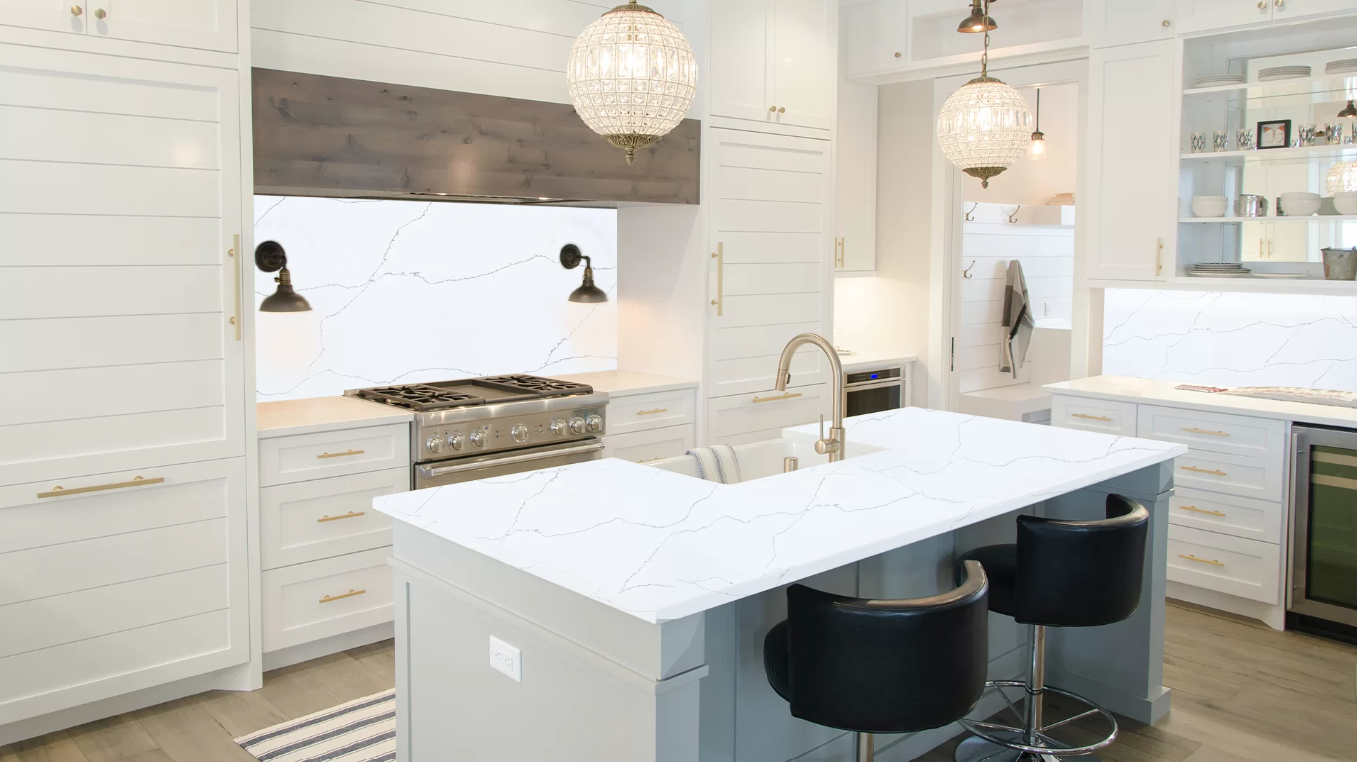- November 15, 2024
- 0
- Quartz
The Ultimate Guide to Choosing the Right Quartz Slab Thickness for Your Kitchen

When selecting quartz countertops for your kitchen, one critical factor to consider is the thickness of the quartz slab. The thickness not only affects the aesthetics of your countertop but also its durability and functionality. Here’s your ultimate guide to choosing the right quartz slab thickness for your kitchen.
- Standard Thickness Options
Quartz slabs typically come in three standard thicknesses: 1.2 cm (0.5 inches), 2 cm (0.75 inches), and 3 cm (1.25 inches). Each thickness has its advantages, depending on the design and structural needs of your kitchen.
- 1.2 cm (0.5 inches): This is the thinnest option and is often used in applications where the countertop will be laminated with a thicker edge or in areas with minimal use, such as bathroom vanities. It’s lightweight and can be a cost-effective choice for certain projects.
- 2 cm (0.75 inches): This mid-range thickness is popular in European-style kitchens and offers a balance between weight and strength. It can be used with a laminated edge to give the appearance of a thicker slab while keeping the cost and weight down.
- 3 cm (1.25 inches): The thickest standard option, 3 cm quartz slabs, are favored in the U.S. and provide a substantial, luxurious look. They are strong and durable, making them ideal for kitchen countertops that will see heavy use.
- Considerations for Choosing Thickness
- Aesthetic Preferences: Thicker slabs (3 cm) offer a more robust and premium look, making them a popular choice for modern kitchens where the countertop is a focal point. Thinner slabs (1.2 cm or 2 cm) can be used to achieve a more streamlined, minimalist look.
- Durability: Thicker slabs are generally more durable and less prone to breakage, especially in high-traffic kitchen areas. If your countertop will be subject to heavy use or if you plan to have an overhang for seating, a 3 cm slab is recommended.
- Budget: Thicker quartz slabs tend to be more expensive due to the additional material and weight, which can increase both material and installation costs. If you’re working within a budget, a 2 cm slab with a laminated edge might provide the best balance of cost and appearance.
- Support Structure: The thickness of the slab may also determine the need for additional support. Thinner slabs may require more support, especially in areas with overhangs or where the countertop spans a large distance without cabinetry beneath it.
- Edge Profiles and Thickness
The thickness of your quartz slab will also influence your choice of edge profiles. Thicker slabs can accommodate more intricate edge designs, such as ogee or waterfall edges, while thinner slabs may require simpler edges like a straight or beveled edge.
Conclusion
Choosing the right thickness for your quartz countertop is essential to achieving the desired look and functionality in your kitchen. Consider your aesthetic preferences, the level of durability you need, your budget, and the support structure required when making your decision. Whether you opt for a sleek 2 cm slab or a robust 3 cm slab, quartz offers a versatile and durable option for any kitchen design.
